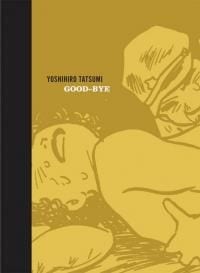
Kids plow through digest-sized books of manga at bookstores, libraries and comic shops, devouring them one after another like hungry little wolves. These little books have fattened the shelves of bookstores across the US, signaling not just a renewed interest in reading comics, but especially Japanese comics. What’s amazing about the Japanese style—and maybe I’m the only one who thinks this—is that many of these comics are printed right-to-left, giving the reader the experience of reading the manga in its original context (if not its original language).
These books have readers of all ages, but many of these titles are aimed at younger readers, meaning there is a generation out there that’s learning to read “backward”. That’s the perspective of parents, skeptics and gawkers, anyway, because they’re just not adaptable like their kids.
Narrow, closed-minded: that’s how I’ve always viewed manga. It always seemed to be about trading cards or spirit animals, and that doesn’t interest me (at least not very much). Then, a thought occurred to me: imagine if people in Japan thought all American comics were like Rob Liefeld’s Youngblood. It was humbling, embarrassing and absolutely wonderful to realize something so simple, and it lead me to Yoshihiro Tatsumi.
Good-bye is the third collection of Tatsumi’s short stories collected by Drawn & Quarterly (the first two being The Push Man and Other Stories and Abandon the Old in Tokyo. Tatsumi is a pioneer of gekiga, comics aimed at an adult audience, and his stories present a perspective that can be challenging for a reader. The stories are not challenging in the sense of having to understand Japanese culture or values. In fact, his themes are universal: loneliness, alienation, anxiety, sexual hang-ups. What requires a shift in the readers’ perspective is exploring the world of Tatsumi’s imagination. It is dark and disturbing, but definitely worth the trip.
In “Just a Man”, Mr. Hanayama is forced to retire and dreads spending his remaining days with the wife and daughter he hates. He decides to blow his savings—which he’s kept hidden from his family—on women and booze. He finds no joy in his new found independence, however, and is unable to go through with his planned escapades. In the end, walking alone near a war memorial, he climbs atop an old cannon and urinates on it, saying, “We’re both impotent now, you worthless old relic.” The cannon is an obvious phallic symbol, but Tatsumi has Hanayama point it out, letting the reader know Hanayama is aware of its symbolism. In the final moments of the story Tatsumi borders on cliché, but the cumulative effect of Hanayama’s failed sexual conquests and his helplessness in the face of an unwanted retirement give “Just a Man” not just a satisfying ending, but one that is devastating.
The opposite is true of “Woman in the Mirror”, in which a man recounts the story of walking in on a neighbor’s son–the only son in a family of women–dressed as a woman and posing in front of a mirror. Later, as he walks his old neighborhood, the man spots the boy, now grown with a wife and child, and offers a bit of pop-psychology about the man’s cross-dressing: “He tried to escape by shedding his manhood. That was his only way out.” It’s clunky and just too easy, making the story end with an almost audible thud.
Again and again, Tatsumi’s characters are spiritually crushed, their lives overrun by uncontrollable and often unwanted desires. Nearly everyone is suffering anxiety over their place in life, living with the fear they’ve wasted their best years. In “Rash” this feeling physically manifests in the form of a scaly, full-body rash on a retired man. Soothing himself in a nearby river, the man learns to control the rash and eventually makes it go away. What might have been a story about controlling fear and overcoming depression takes a dark turn when the man takes in a young girl to his home. The story ends with the man’s shadow looming over the girl’s bedroom door, an implication of rape bolstered by his thought, “Sixty years…I’ve never felt such a thrill.”
Tatsumi’s art isn’t flashy or particularly eye-catching, it’s workman-like and spare, with just enough detail to give a room or a street or an office real physical presence. His characterization is clear and specific, with a full range of emotions sometimes spread over just a few panels. This clear, clean style of storytelling makes Tatsumi’s work easily digestible on the visual level, but the tone of despair can sometimes be overwhelming. These stories leave the reader with an unsettled feeling that practically requires one to come back to them, but makes doing so an exercise in fear.
Rereading these stories, that unsettled feeling doesn’t go away but, like the kids in the bookstores with their “backward” manga, one’s perspective begins to change. Even the most jaded and cynical among us wants a happy ending every now and again, and even though Tatsumi doesn’t oblige, he does gives us faint glimmers of hope. You see it in the background with the mother and child in the park, or the boys playing soccer. For Tatsumi’s characters, it’s always somewhere else. Maybe that’s just a function of Tatsumi’s work: by showing us how bad things can be he helps us see the good. Written down, it sounds cliché, like Mr. Hanayama and the cannon in “Just a Man”, but experiencing it for oneself is an affirmation of the power of great storytelling.

![Call for Papers: All Things Reconsidered [MUSIC] May-August 2024](https://www.popmatters.com/wp-content/uploads/2024/04/all-things-reconsidered-call-music-may-2024-720x380.jpg)



